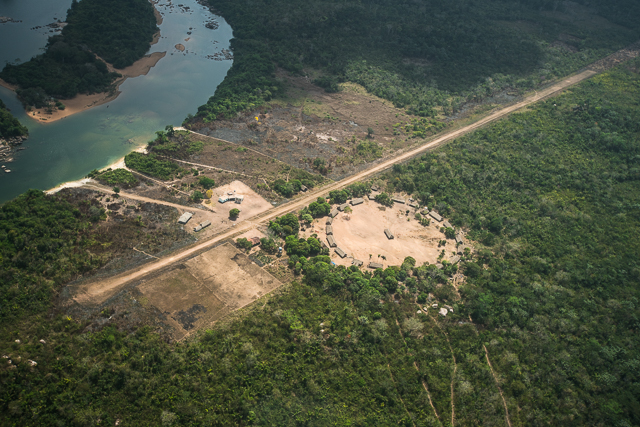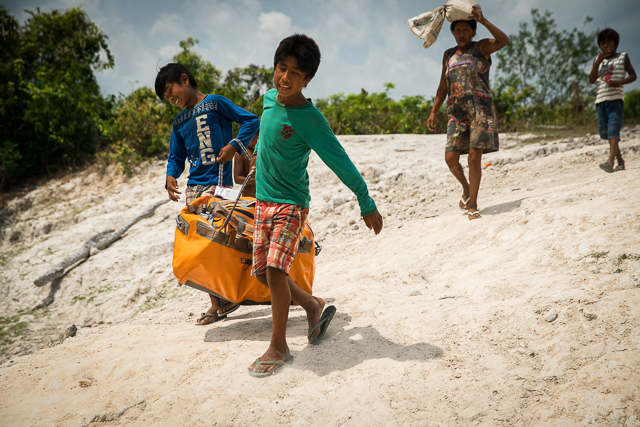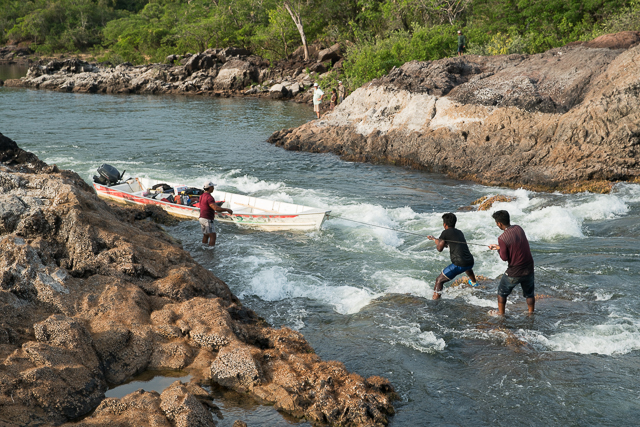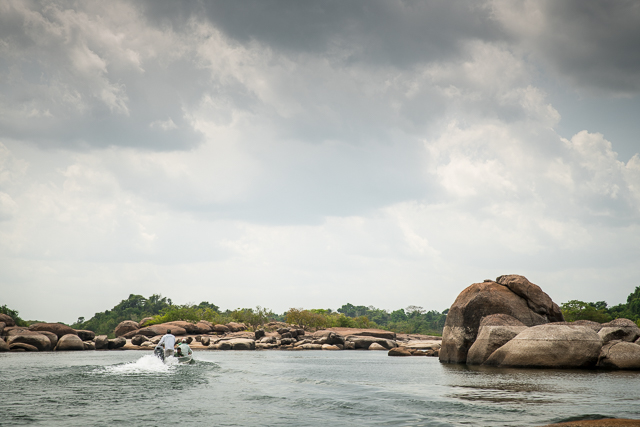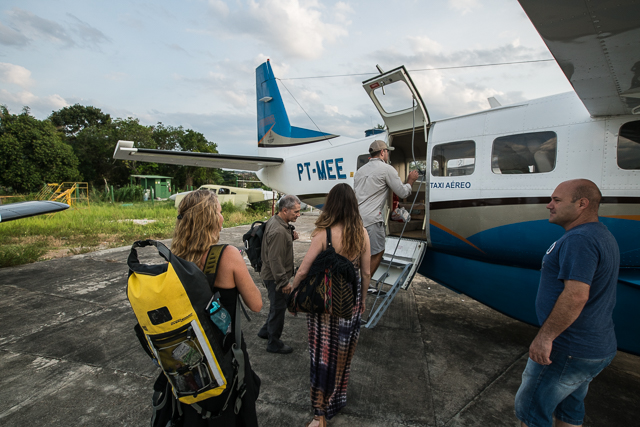
Meredith McCord and photographer, Matt Jones, of Tailwaters recently returned from jungle angling in Kendjam in the Amazon Basin of Brazil with Untamed Angling. We will be featuring Meredith’s daily record of her angling ventures in a nine-part travel journal. This is part two.
Day Two – Traveling to Kendjam Village, Brazil
Breakfast came early at 5 am, but my excitement for the day had me buzzing.
At 5:30 am, we checked out and hopped on the large mini bus for the 15-minute drive to the “airport club”, a small domestic airport that caters to passengers heading to remote areas of the Amazon. There we met our fellow anglers for the week: Ken and Brian (uncle and nephew duo from NYC and Roanoke, Va.); Gilberto and Romi (a fun couple from Argentina); and of course Matt, Jackson, and Roberto, who’d be my fishing partner. Passports were handed over at the airport club’s VIP lounge, which luckily had A/C, as it’s very humid and warm in Manaus, even at this time of the morning.
At 6:10 am sharp we took off on a comfortable nine-seater Cessna Grand Caravan. The four-hour flight was direct, which isn’t always the case — most of the time you stop midway in an old mining town for a quick pilot change and a bathroom break.
Flying at more than 10,000 feet, the view from the plane showcased the dense population of housing and buildings in Manaus and the “Meeting of the Waters” which is the confluence of Rio Negro’s darkness into the sandy colored waters of the upper Amazon River (Rio Solimoes). Past the river, there’s a sharp contrast where the city ends and the bright green jungle begins, with hints of yellow flowering trees. The flight gave me a sense of going back in time, knowing that there are hectares upon hectares that may still be untraveled by humans. The flight felt long and my heart was beating fast – I was ready to get there and see what awaited us on the Iriri River.
After three and a half hours, we descended, and the pilot flew over the Kayapo’s village, between the rock of Kendjam and the Iriri River. The village is set in a perfect circle with a large thatched-roof meeting hut situated perfectly in the middle. The runway is little more than a short dirt road between the thatched-roof village and concrete schoolhouse. What impressed me as much as the perfectly situated huts was the clarity of the Iriri River: gorgeous boulders, sandy beach and flats with emerald green clear waters flowing over and between. I found myself trying to spot fish while we were still in the air.
The landing was smooth, and it seemed like the entire village came to greet us. Standing under a large mango tree, the Kayapo people were just what I had expected, except with a little more clothing than what I’d seen in photos, and the children’s bodies were beautifully painted.
As the door to the plane opened, the arid, hot air hit us, and we knew we’d arrived in the middle of the Amazon. The tribe was shy, and quietly observed us, but no one rushed to unload the plane. I soon learned it’s because the boats coming upstream from the lodge were running late. But soon, last week’s clients arrived in the boats for their flight home. I chatted with several of them to better set my expectations for the week, and I also chatted with the returning trip’s guides, including Augustine as guide from Salta, Argentina who has been guiding for over 10 years and the head guide, Guillerme (“Gui”), whom I had the privilege of fishing with last year at the Rio Marié. Gui actually helped me with an IGFA world record or two on our last trip, so I was excited to have a few goals in mind for this trip. These conversations helped me prepare for the upcoming week.
Our bags were taken to the white sandy beach of the river, where long skinny aluminum skiffs were anchored. One was equipped with a 40HP Yamaha jet motor and the other three had long-stem propeller “lawn mower” motors (they reminded me of the gator tail motors we used in the super skinny marshland in south Louisiana). The river was beautiful and the air was hot, so as the kids started jumping into the fresh water, I decided to do the same. This caused laughter from the kids, and they started doing flips and jumping to my English shouts of “one, two, three.” Lots of fun, and the river felt awesome.
Due to the low water, tough rapids, and rocks that were dangerously close to the surface, back at the village, each guide personally selected two of the strongest and best Indian river navigators for this last week of the season. Then off we set down river. Matt and I were in a 26’ boat with Augustine, two Indian “river” guides, and the chief with his wife and three kids. Ham sandwiches were offered with sodas, juice, and water for the long five-hour trek to the lodge. Wading boots were required, as we had to navigate five or six major rapids along the way. But it was impressive to watch the Kayapo Indians do everything in just flip flops.
Matt and I made ourselves comfortable among all the bags and coolers, and along the way, the chief got highly animated when he saw a tapir swimming across the river. The Kayapo boys in our boat wanted to lasso the animal, but the chief’s youngest daughter screamed and cried to leave it be. Luckily we were able to get some great video and photos.
Just before sunset, we turned the corner back upstream into a beautiful bay, and there, on an expansive sandy beach, was Kendjam Lodge. This incredible oasis is made up of four safari tents, two on each side of a permanent dining/lounge screened hut, and a kitchen and guides’ quarters in the back. The Indians, there for the week to assist us, stayed in a camp several hundred meters up the beach.
The lodge, tents, beds, and furniture were awesome, but the fully plumbed bathroom situated right behind my tent was just plain amazing. All this comfort built in the middle of jungle blew my mind. Untamed Angling sure knows how to set up “camp”.
– Meredith McCord







